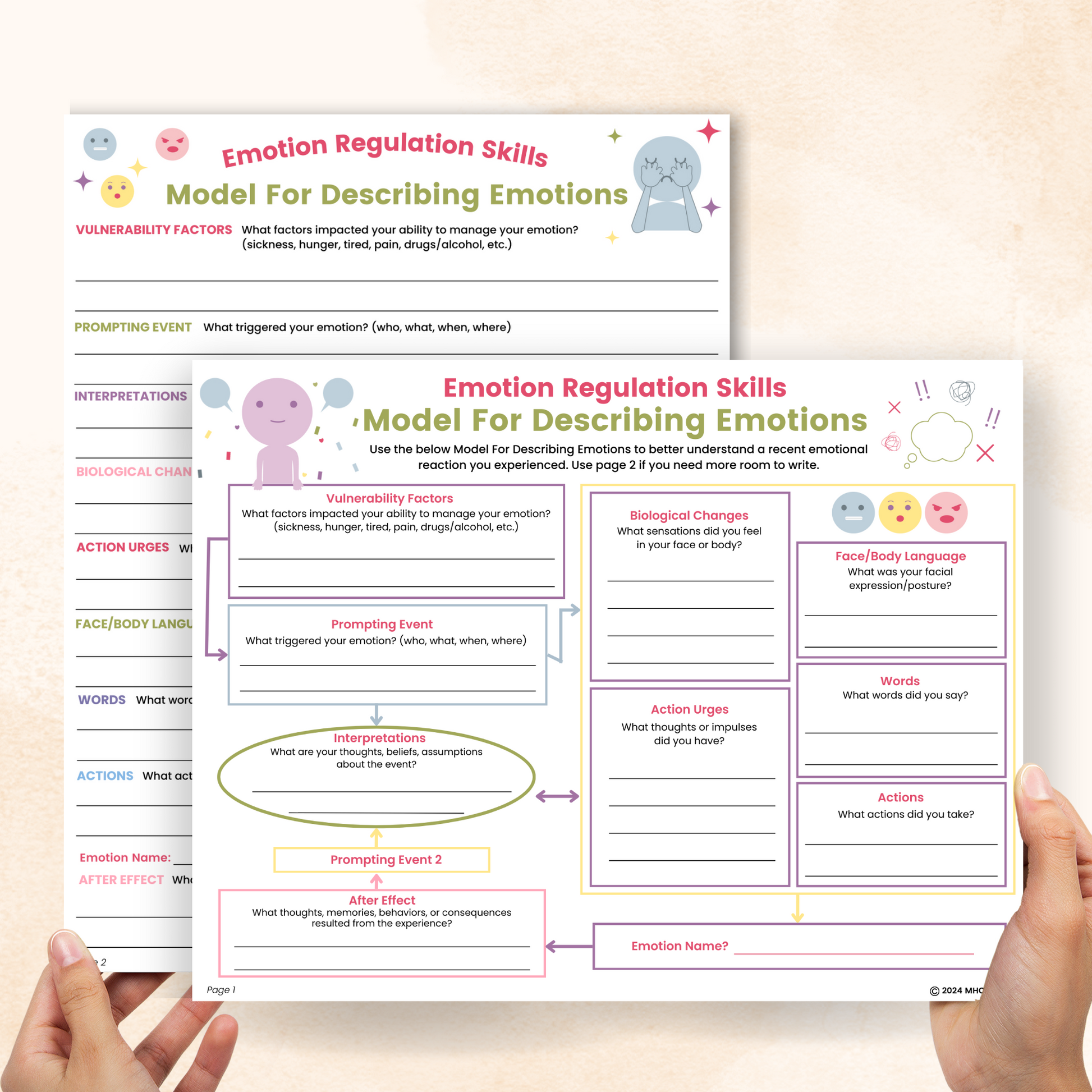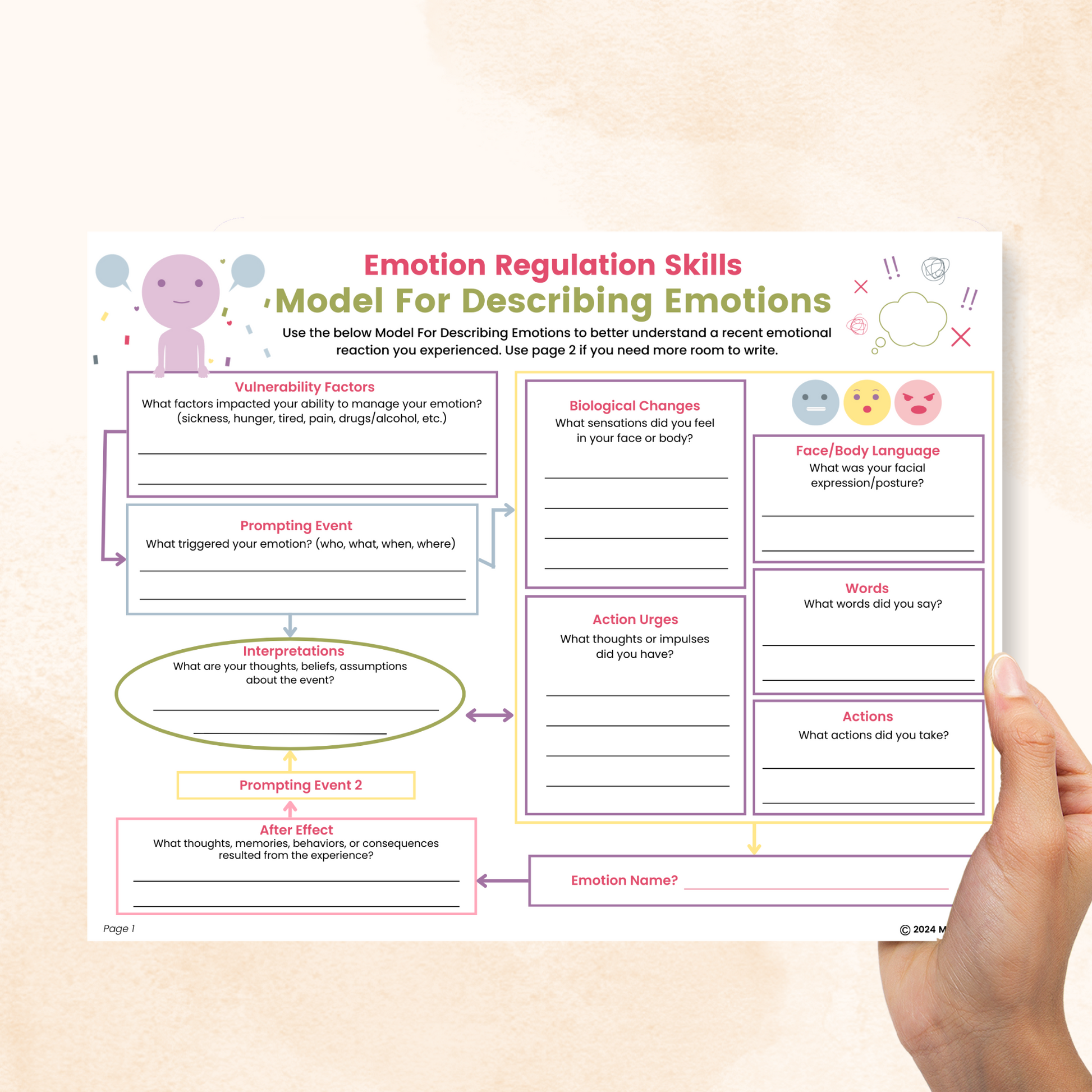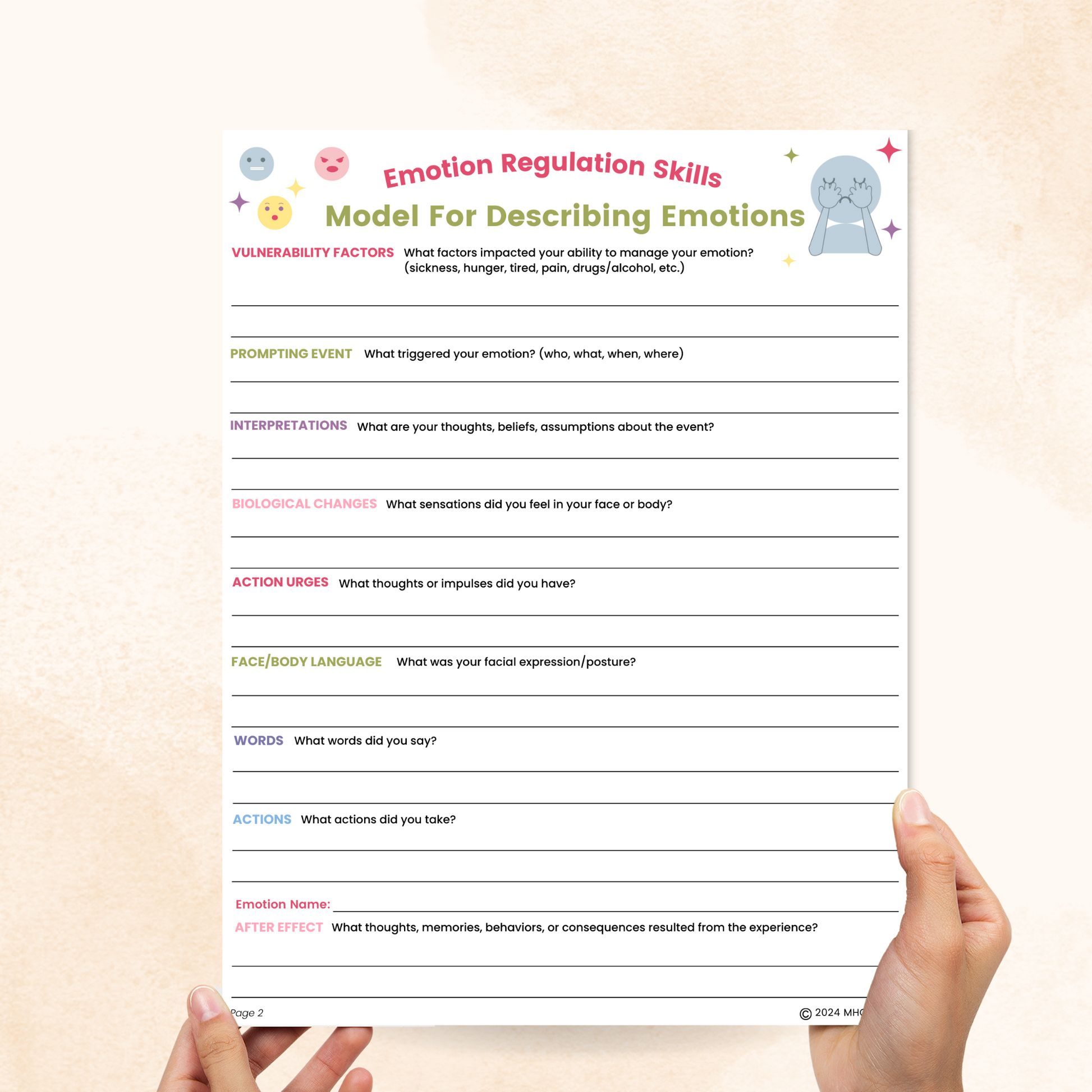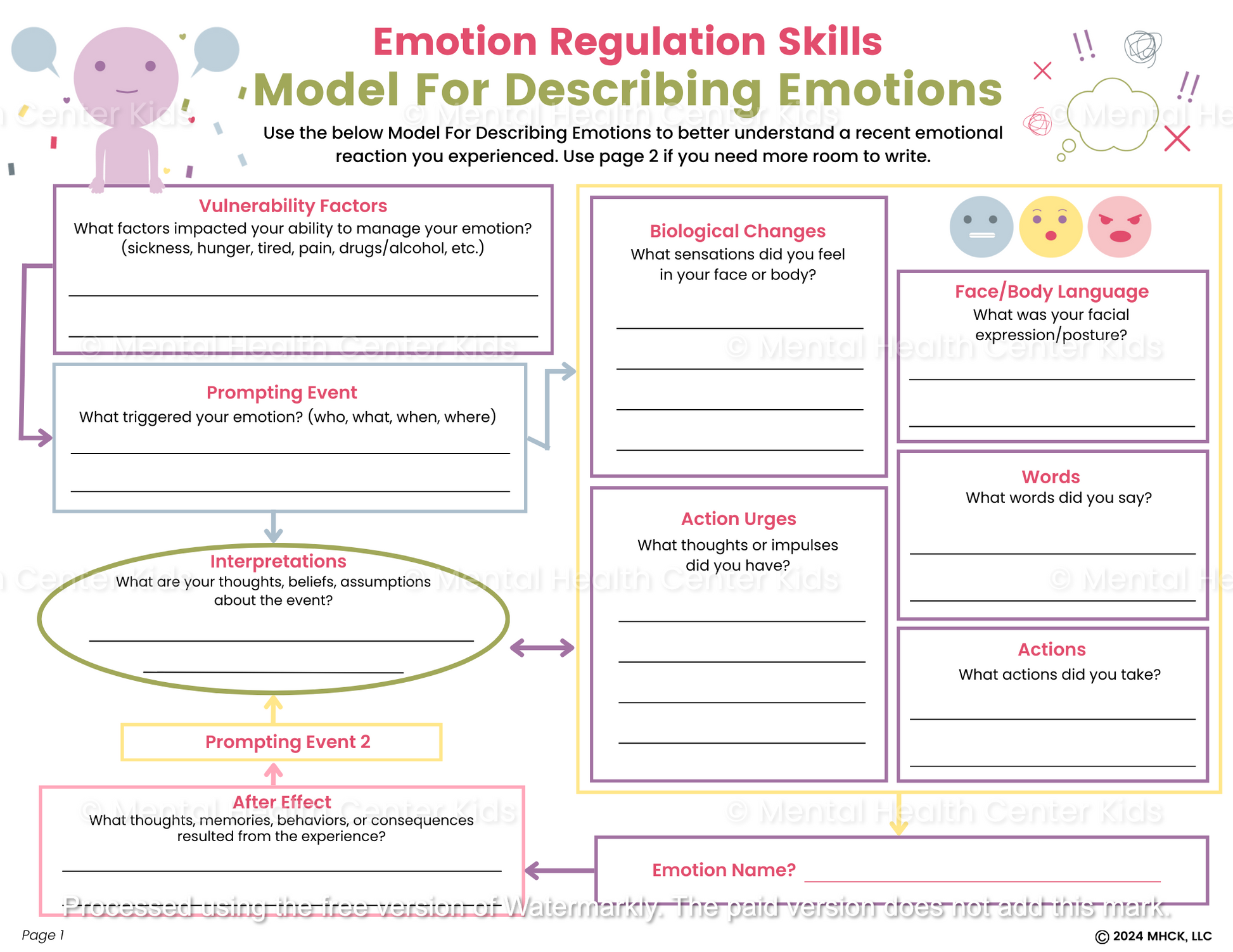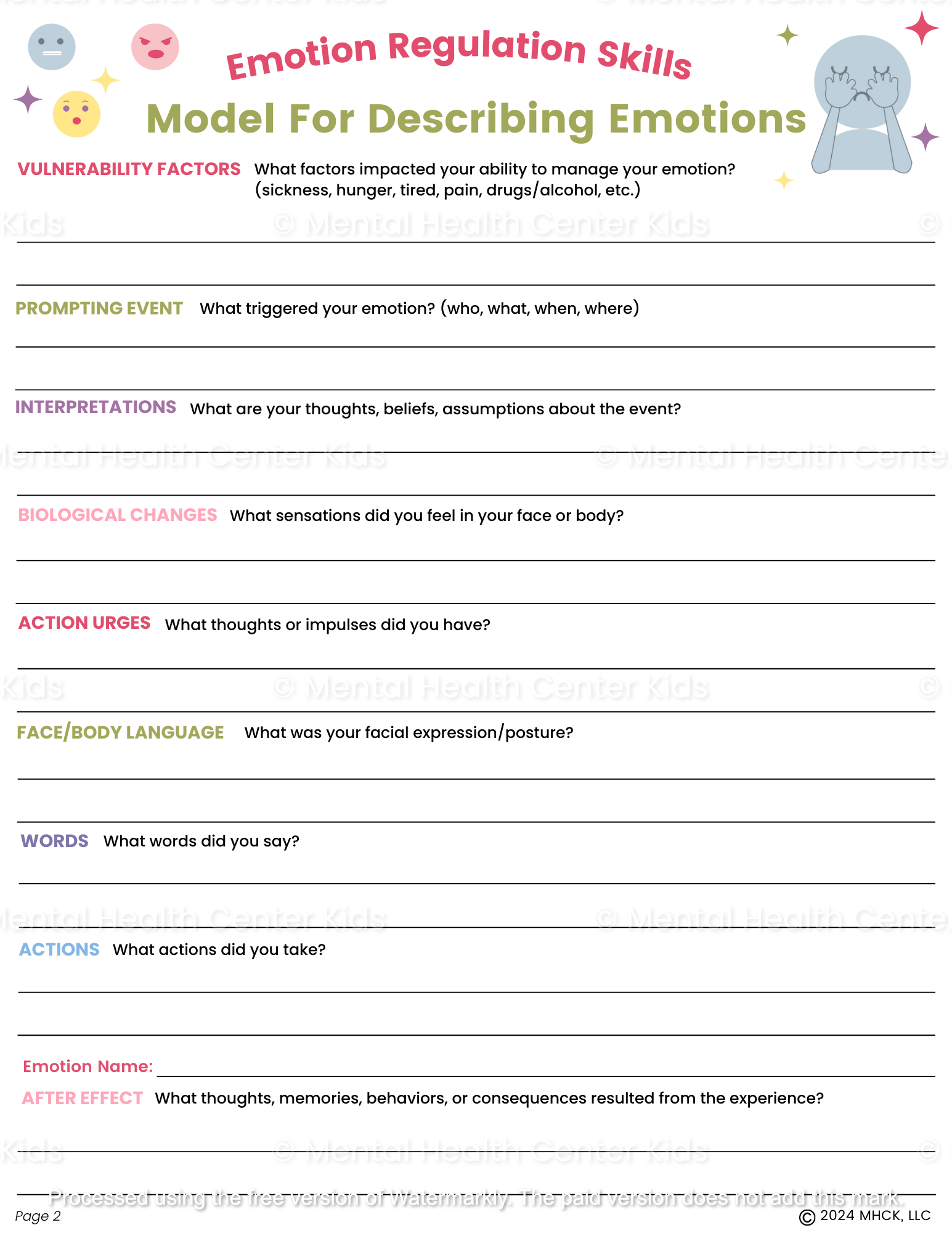DBT Model Of Emotions Worksheet
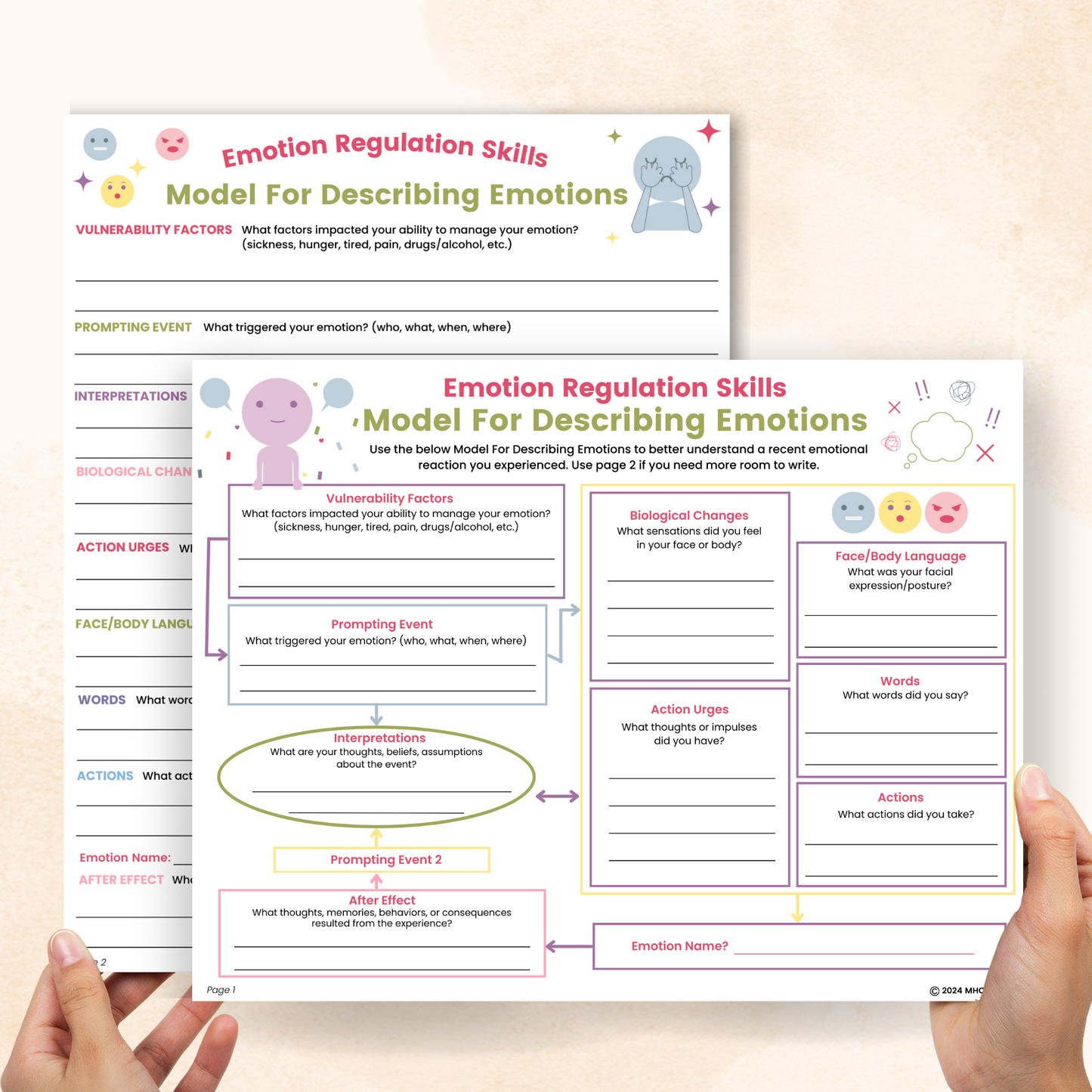
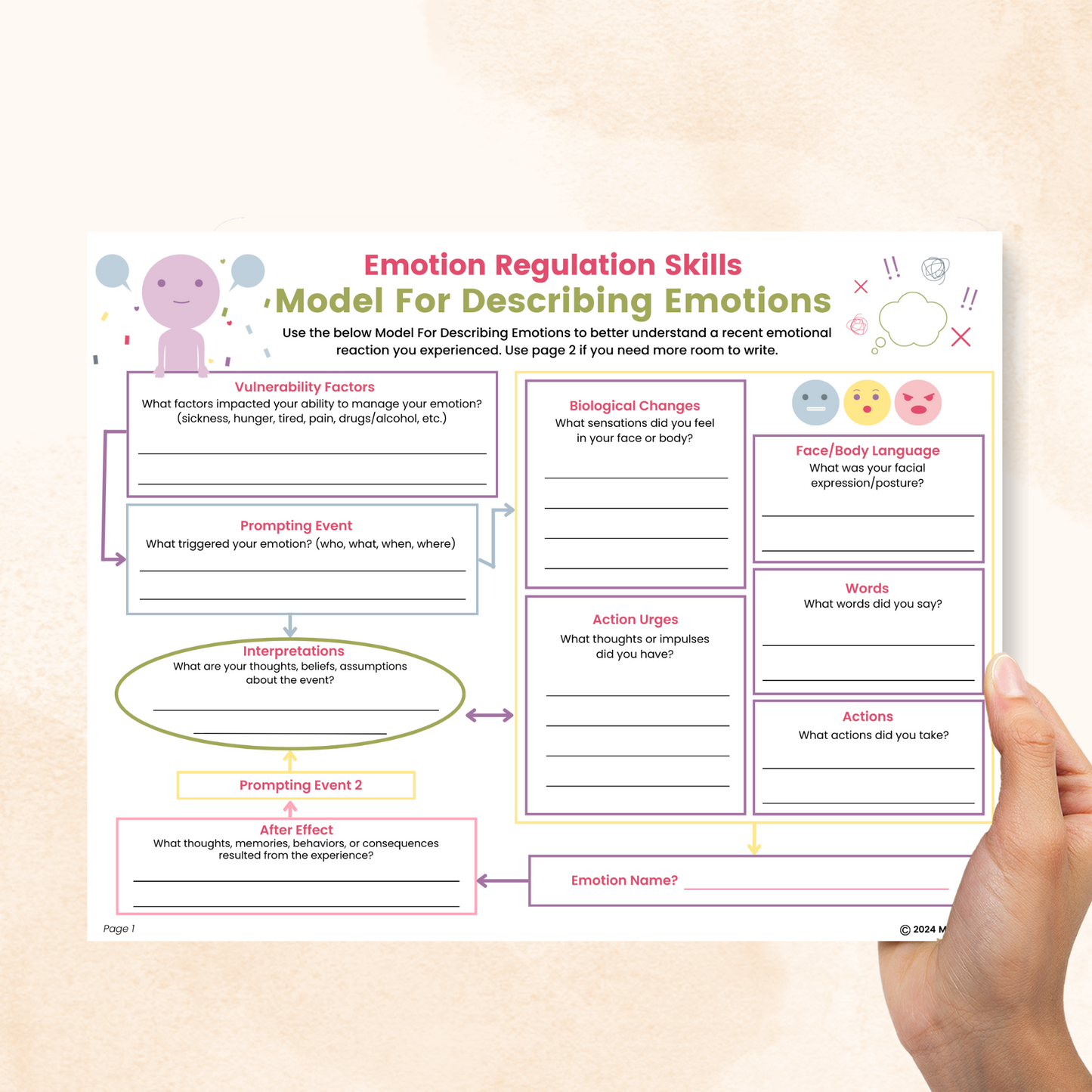
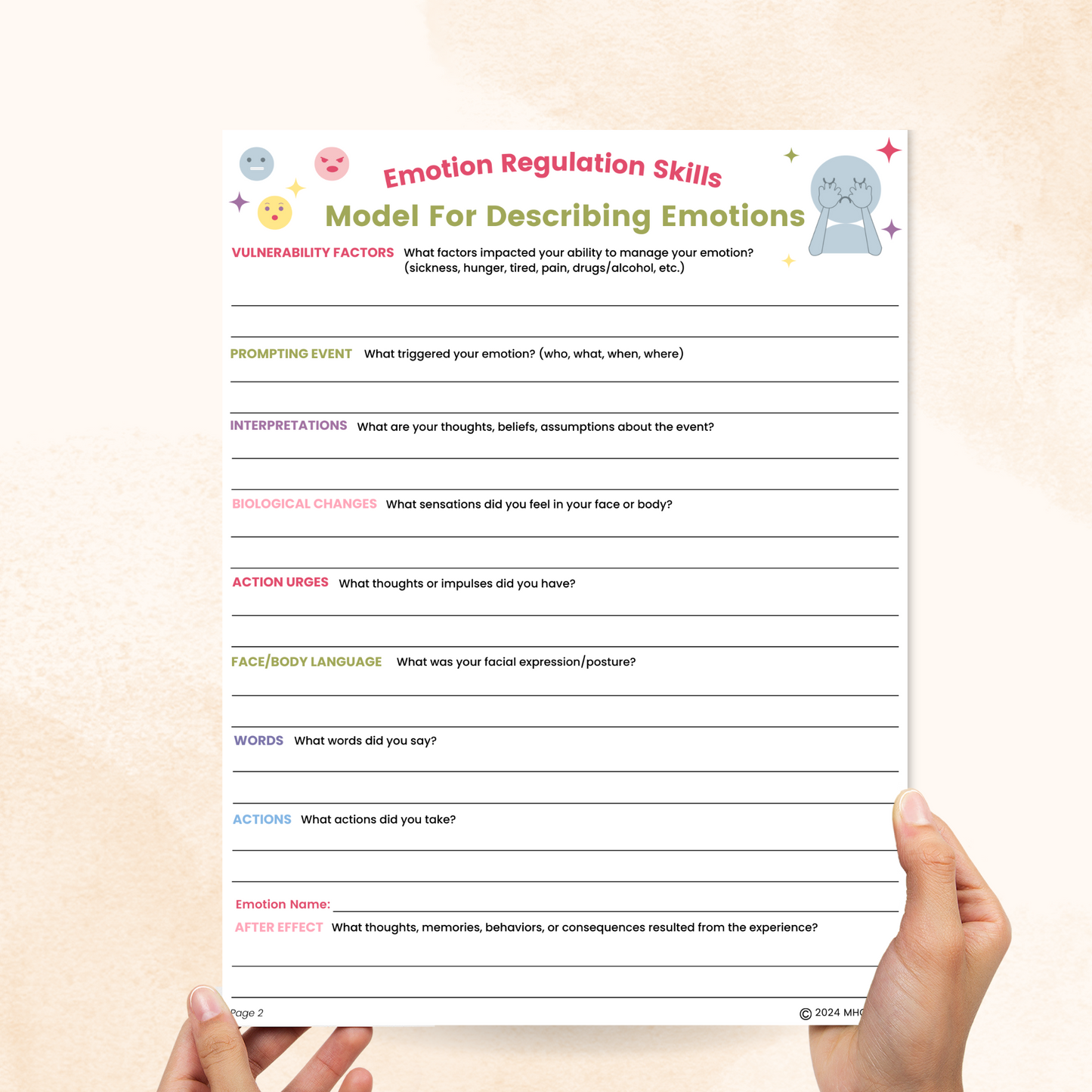
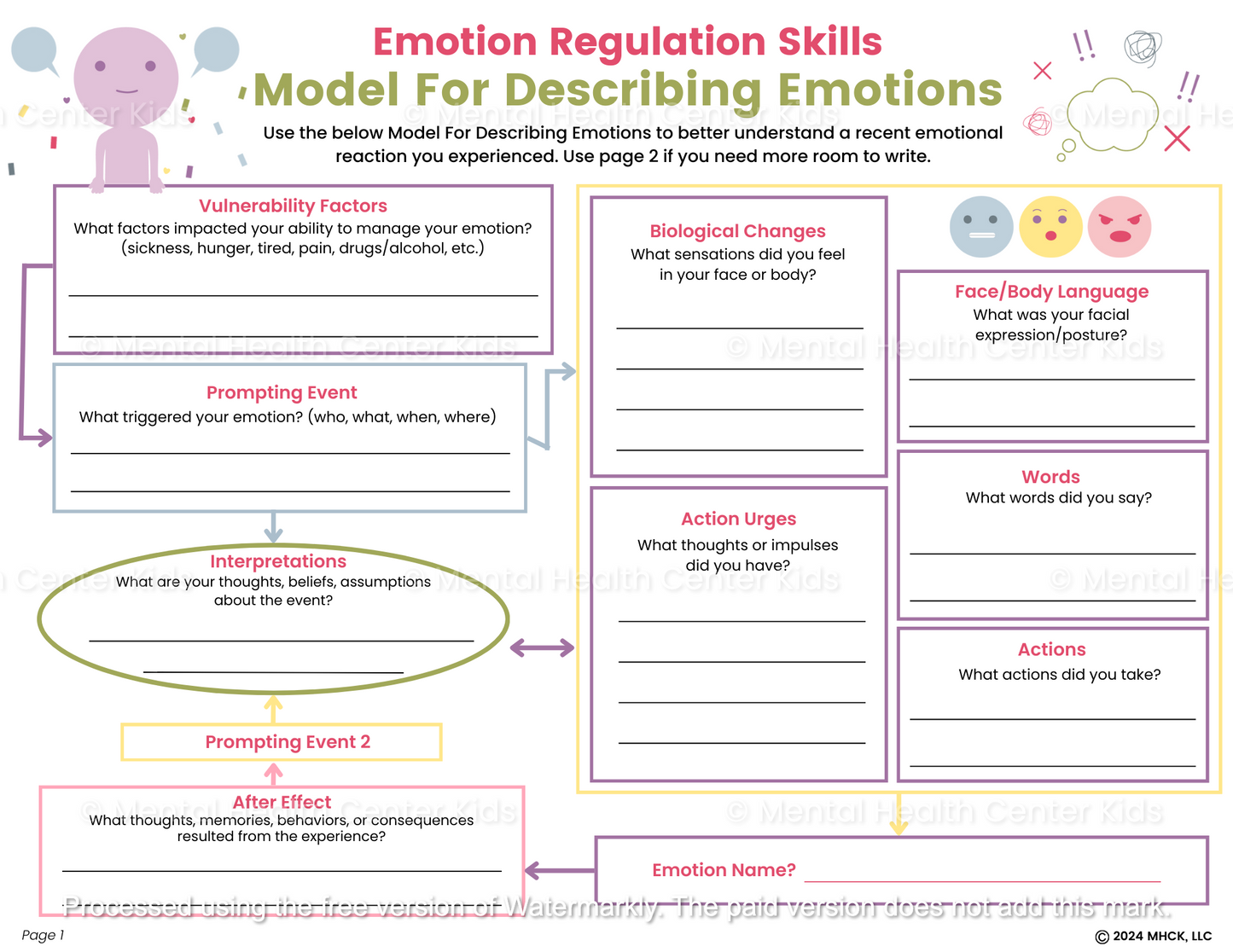
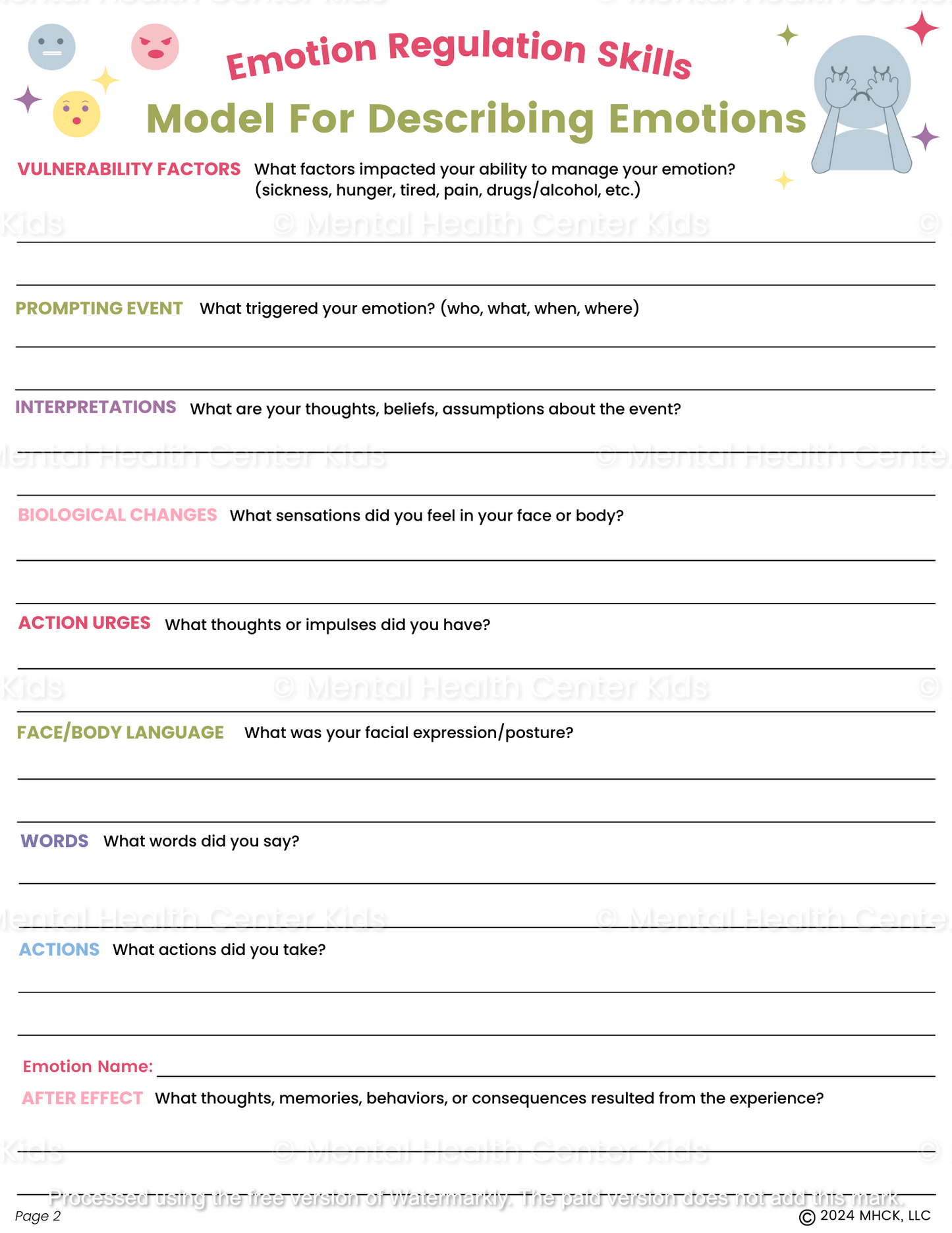
The DBT model of emotions is a framework that helps individuals understand and manage their emotional experiences by identifying different factors that affect them. Examples of these factors include a person’s hunger, energy levels, urges, and body language. The DBT model of emotions can look complicated at first glance, and that’s because it reflects the complex nature of emotions themselves.
The DBT Model Of Emotions Worksheet is designed to help clients reflect on the factors that triggered a strong emotion. Page one asks them to identify whether they felt hungry, or tired, the sensations they felt in their face or body, the words they said, actions they took, and more. If they run out of space, they can use page two.
Using these worksheets helps kids and teens have a good foundation on how the model of emotions works and how to empathize with others. We suggest pairing this worksheet with our DBT Model of Emotions handout to help clients learn and appreciate the different parts of the emotional process. Our Skills for a Model of Emotions handout is also a helpful supplement illustrating DBT skills that can be used for each step in the process.
*This item is an instant digital download. A link to download your files will be emailed to you once payment is confirmed.
Want more resources like this? Check out our full catalog of DBT worksheets and handouts.
References:
- Faßbinder, E., Schweiger, U., Martius, D., Wilde, O. B., & Arntz, A. (2016g). Emotion regulation in schema therapy and dialectical behavior therapy. Frontiers in Psychology, 7. https://doi.org/10.3389/fpsyg.2016.01373
- Morie, K. P., Crowley, M. J., Mayes, L. C., & Potenza, M. N. (2022). The process of emotion identification: Considerations for psychiatric disorders. Journal of Psychiatric Research, 148, 264–274. https://doi.org/10.1016/j.jpsychires.2022.01.053
- Instant digital download
- File: Fillable PDF - 2 Pages
- Size: 8.5" x 11"


